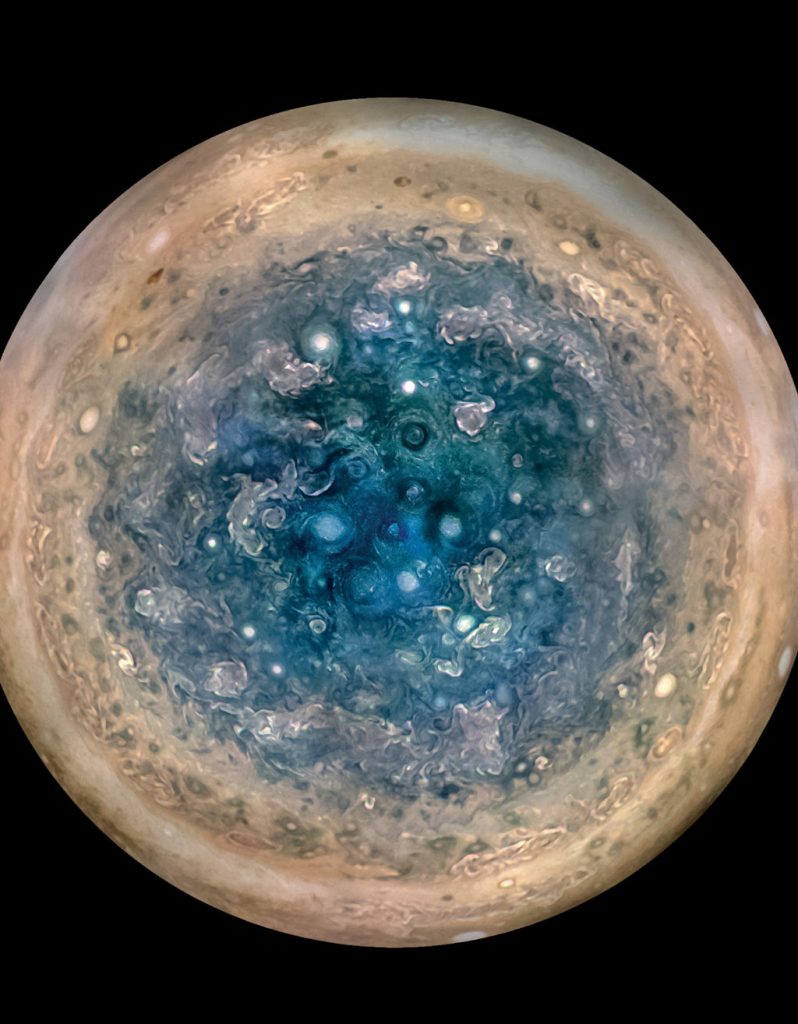NASA discoveres ‘whole new Jupiter.’ Scientists are baffled by the planet
Jupiter, the largest planet in our solar system, just baffled astronomers. Scientists looking at results from NASA’s Juno mission were surprised to find something totally different than they expected.
NASA says its Juno mission to Jupiter sent back results showing the planet is a complex, gigantic, turbulent world, with Earth-sized polar cyclones, plunging storm systems that travel deep into the heart of the gas giant, and a mammoth, lumpy magnetic field that may indicate it was generated closer to the planet’s surface than previously thought.

Scott Bolton, Juno principal investigator from the Southwest Research Institute in San Antonio, said these first results already demonstrate it was well worth the journey.
Among the findings that challenge assumptions are those provided by Juno’s imager, JunoCam. The images show both of Jupiter’s poles are covered in Earth-sized swirling storms that are densely clustered and rubbing together.
“We’re puzzled as to how they could be formed, how stable the configuration is, and why Jupiter’s north pole doesn’t look like the south pole. We’re questioning whether this is a dynamic system, and are we seeing just one stage, and over the next year, we’re going to watch it disappear, or is this a stable configuration and these storms are circulating around one another?” Bolton said.
But this isn’t the single surprise scientists had when analysing data. Juno’s Microwave Radiometer (MWR), which samples the thermal microwave radiation from Jupiter’s atmosphere, from the top of the ammonia clouds to deep within its atmosphere, shows that the planet’s iconic belts and zones are mysterious, with the belt near the equator penetrating all the way down, while the belts and zones at other latitudes seem to evolve to other structures. The data suggest the ammonia is quite variable and continues to increase as far down as the MWR can see, which is a few hundred miles or kilometres.
Also, even if scientists already knew Jupiter had the most intense magnetic field in the solar system, they now discovered it’s even stronger and more irregular in shape. Juno’s magnetometer investigation (MAG) data indicates the magnetic field greatly exceeded expectations at 7.766 Gauss, about 10 times stronger than the strongest magnetic field found on Earth.
Jack Connerney, Juno deputy principal investigator and the lead for the mission’s magnetic field investigation at NASA’s Goddard Space Flight Center in Greenbelt, Maryland, explains that the uneven distribution of Jupiter’s magnetic field suggests it might be generated by dynamo action closer to the surface, above the layer of metallic hydrogen.
Juno also is designed to study the polar magnetosphere and the origin of Jupiter’s powerful auroras—its northern and southern lights. These auroral emissions are caused by particles that pick up energy, slamming into atmospheric molecules. Juno’s initial observations indicate that the process seems to work differently on Jupiter than on Earth.
Juno launched in August 2011, entering Jupiter’s orbit on July 4, 2016.